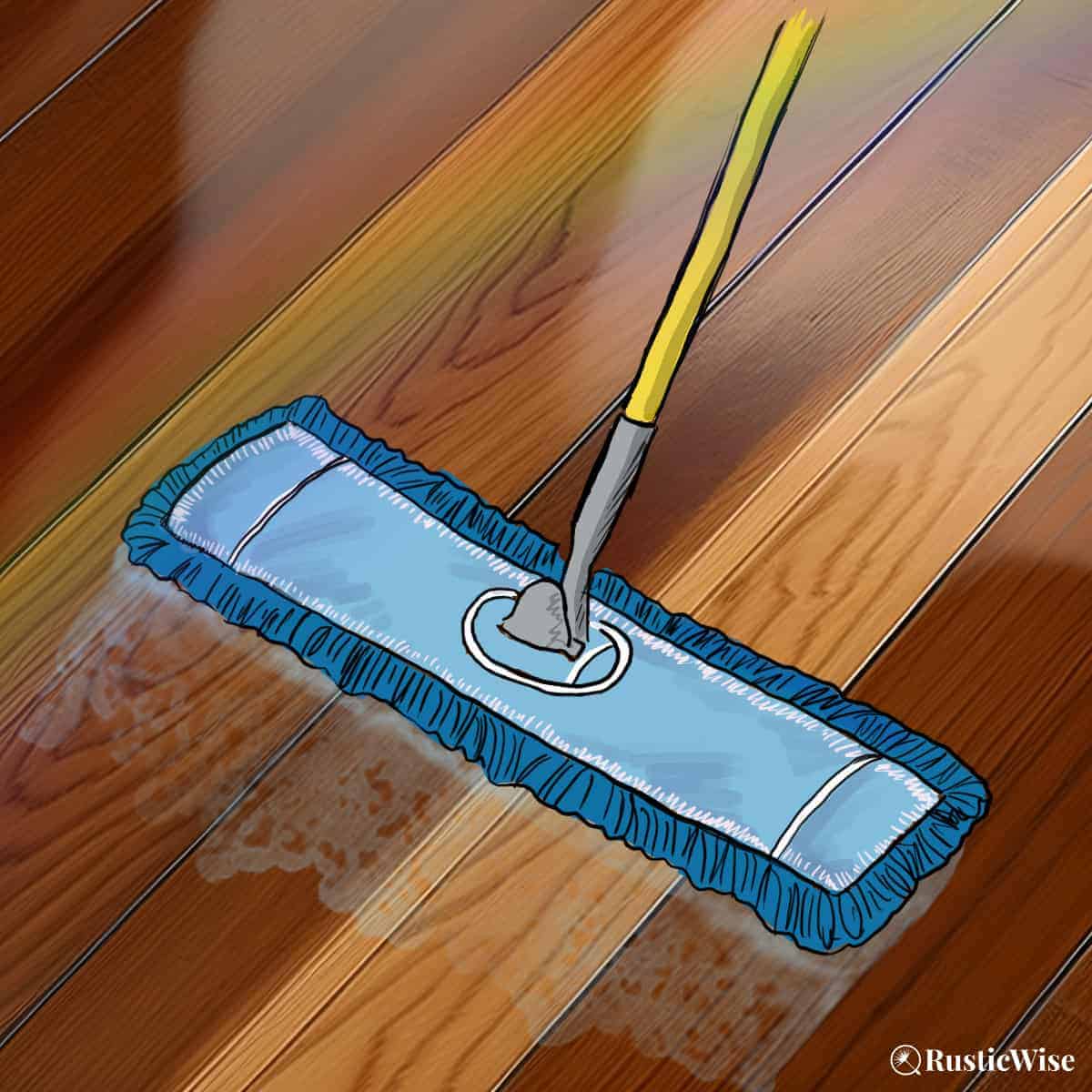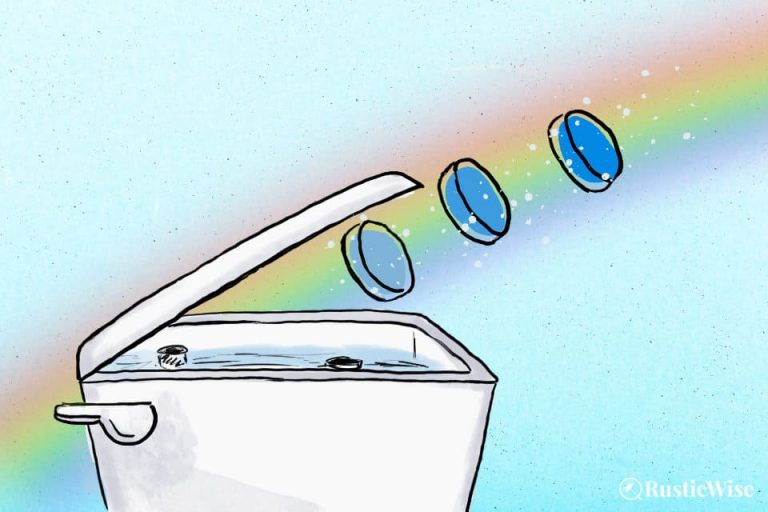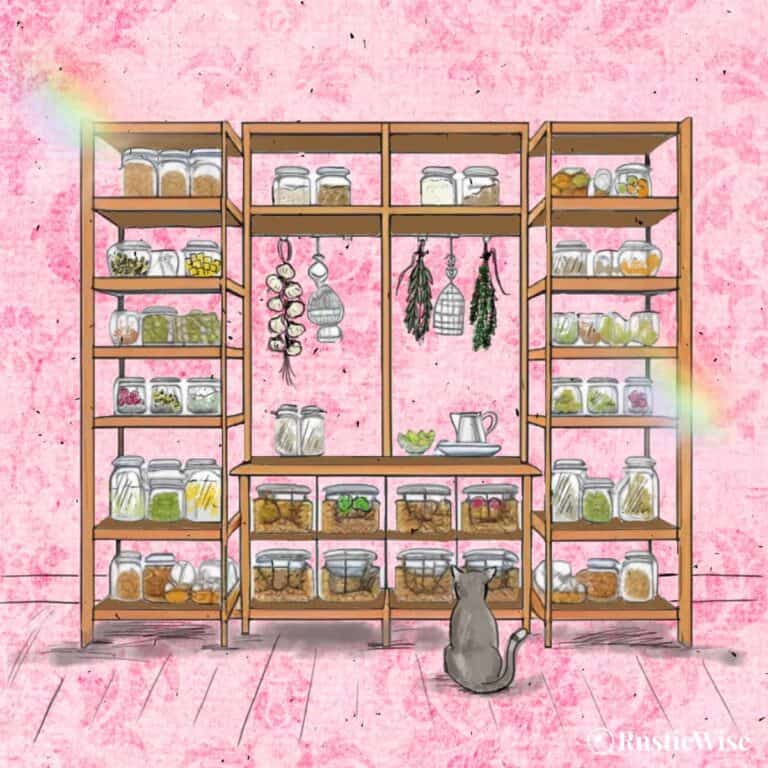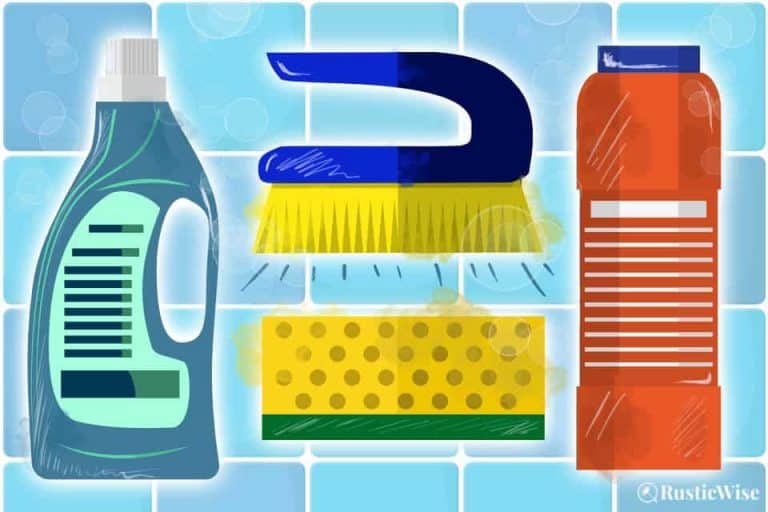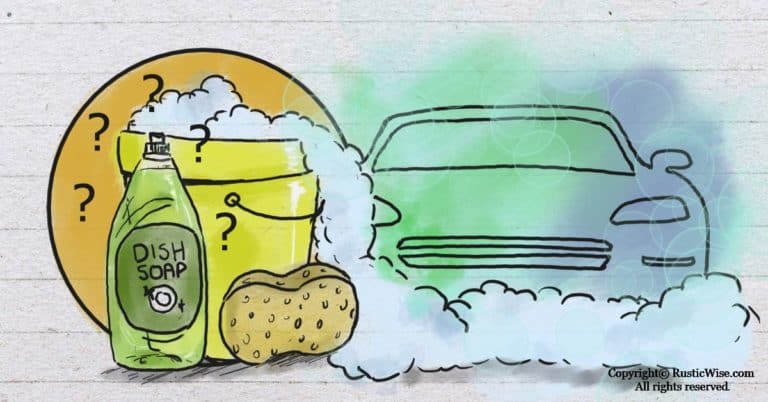Best Way To Clean Engineered Hardwood Floors
Engineered hardwood flooring is a popular flooring choice for many homeowners. It has the warmth and luster of natural wood—at a fraction of the cost of solid hardwood floors.
So, what’s the best way to clean engineered hardwood floors? A daily sweep or vacuum keeps crumbs and debris from scratching the floor. Use a dry microfiber mop to do a weekly dusting to prevent dust buildup. And when doing a deep clean, use a wood cleaner that doesn’t contain bleach, vinegar, or other harsh chemicals that can strip away the polyurethane or wax finish.
Plus, I’ll also share the plant-based and biodegradable product I like to use as a multi-purpose cleaner that’s safe for engineered wood. Let’s look at a few do’s and don’ts when cleaning your engineered floors, along with other cleaning tips.
A closer look at engineered hardwood flooring
Engineered hardwood flooring is a wood product consisting of a thin layer of real hardwood over top of other types of wood, such as plywood. It has the same look and feel as solid hardwood—without the hefty price tag.
Available as individual planks, installing engineered wood flooring is easy enough for DIY projects. Engineered hardwood floors are akin to solid hardwood floors and can be treated similarly.
A benefit engineered floors have over traditional hardwood floors is that it’s slightly more water resistant. Despite that, it’s best to minimize any water exposure to both hardwood and engineered wood to keep floors looking great.
Can you sand and refinish engineered hardwood flooring?
Unlike solid hardwood floors, which can be sanded down and refinished many times over the life of the product, engineered floors don’t have the same luxury. Depending on the thickness of the genuine wood layer, engineered floors may only be sanded and refinished once or twice.
Many manufacturers don’t recommend sanding or refinishing at all.
The takeaway: While engineered floors cost less, they can’t be sanded down as often as solid hardwood flooring. This gives them a shorter product lifespan. But with proper care, many engineered floors can last up to 30 years.¹

Safe cleaning products for engineered hardwood floors
So how do you keep an engineered hardwood floor looking great?
To clean engineered hardwood floors, you should sweep or vacuum daily. A couple of microfiber mop heads (one for cleaning, one for drying) come in handy when doing a deep clean.
For deeper cleanings, use pH-neutral hardwood floor cleaner and follow the instructions from the manufacturer. Or use a mild soap such as liquid dish soap, or Dr. Bronner’s Sal Suds Liquid Cleaner.
Here are safe cleaning products and supplies for wood floors:
- Soft-bristled nylon broom
- Vacuum with brush attachment, or one without a beater bar which could scratch floors
- Microfiber mop heads
- Dry microfiber cloths are an effective way of dusting and polishing your floor without leaving streaks
- pH-neutral commercial floor cleaners such as Bona Hardwood Floor Cleaner, or Aunt Fannie’s Hardwood Floor Cleaner (🌟 check out our recommended products 🛍️)
- Liquid dish soap (such as Dawn)—you will need to follow up with a rinse, then dry wipe to remove any soapy residue
- Safe multi-purpose cleaners such as Dr. Bronner’s Sal Suds Liquid Cleaner
Things to avoid using on a wood floor
The top layer of hardwood flooring is protected with a layer of polyurethane or wax. Certain cleaning products can strip away the finish on your floors over time, or leave it looking cloudy or dull.
Here’s what NOT to use on wooden floors:
- Abrasive cleaners: Avoid anything that could potentially scratch the finish. This includes steel wool pads, abrasive scrubbing powders or liquids, or vacuum attachments with unsafe beater bars.
- Steam cleaners: The high heat and moisture can wreak havoc on your lovely wood floors.
- Strong chemical cleaners: Many commercial cleaning products contain harsh ingredients such as bleach or ammonia which can ruin your floors.
- White vinegar or other acidic cleaners: While I’m a big fan of white distilled vinegar for cleaning around the house, I would steer clear of it on wood floors. Even in diluted amounts, it can dull your floors over time. Ditto for other acidic cleaners like lemon juice or citric acid.
- Waxes or oils: Many oil-based soaps, or waxes should not be used on wood flooring. These can damage the finish and make it look dull.
Cleaning tips for engineered wood floors
Keep your engineered hardwood flooring sparkling clean with these tips.
Do’s
- Wipe up spills promptly: Move swiftly and clean up any spills to avoid staining, or sticky residue.
- Clean regularly: Frequent care and maintenance will help your wooden floors preserve its natural luster and finish.
- Work with the grain: When using a damp mop, scrub in the direction of the grain, not against it. This helps to effectively wash away dirt and grime.
- Use wood-safe products: As mentioned above, only use cleaners and tools that won’t dull, scratch, or otherwise damage engineered hardwood.
Don’ts
- Drag heavy furniture: If possible, lift, rather than drag heavy objects across the room to prevent scratches.
- Use too much water: When cleaning, don’t flood the floor with water. While this type of flooring can withstand some water, avoid letting water sit on the planks for long periods of time. Water may seep through the cracks and warp the flooring.
- Sand or refinish the flooring: Save this as a last resort to restore any damaged floor planks as you can only do this once or twice, max.
Best way to clean engineered hardwood floors: a cleaning schedule
The best way to clean your engineered hardwood floors is to maintain a regular cleaning schedule. Here’s what you should do on the regular.
Daily cleaning
Vacuum or sweep the floors every day to remove dirt and debris. Wipe up any spills ASAP.
Weekly cleaning
Use a dry mop head or microfiber cloth to dust the floors. This helps pick up any stray pet hairs, and keeps dust bunnies at bay.
In high-traffic areas, you may wish to use a damp mop to the floor with plain water.
Monthly cleaning (or as needed)
About once every month or so, it’s a good idea to do a deeper clean and mop your floors using a wood-safe cleaner of your choice.
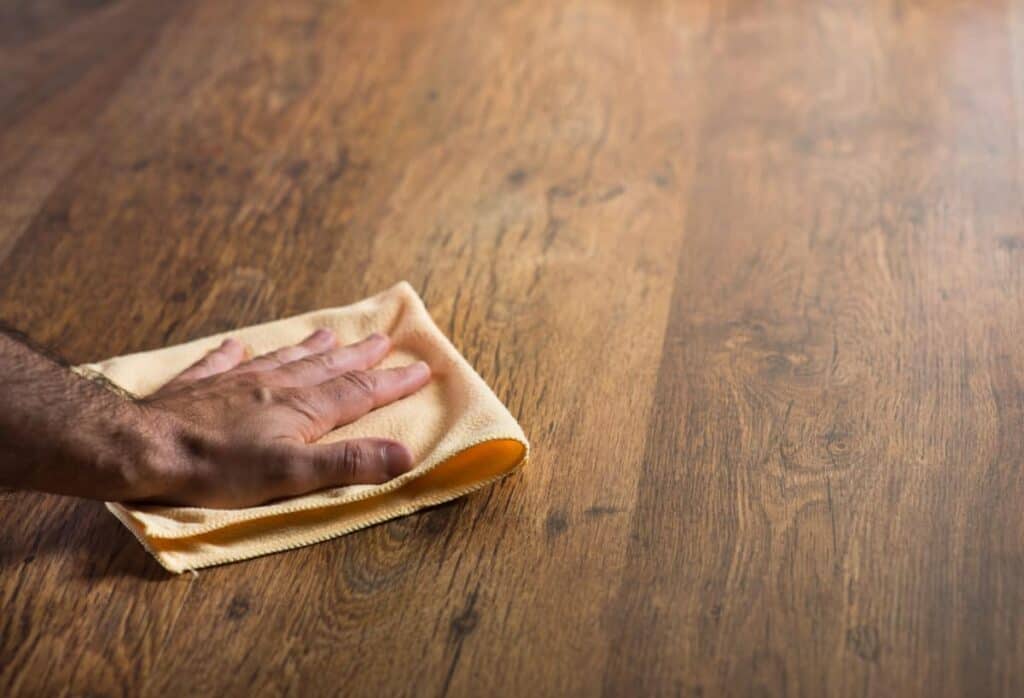
Eco-friendly and multi-purpose floor cleaner
Since I am big on keeping my cleaning supplies to a minimum, I like to use versatile, multi-purpose cleaners.
Dr. Bronner’s Sal Suds Liquid Cleaner (🌟 check out our recommended products 🛍️) is a plant-based detergent that’s designed for cleaning hard surfaces around the house. It’s biodegradable, and uses real fir and spruce essential oils (no artificial fragrances here!) for a refreshing scent.
It comes in a concentrated bottle that lasts a long time.
While I really like regular Castile soap, it’s a natural soap that doesn’t always play nice with hard water. Sals Suds won’t leave any residue like Castile soap sometimes does. (But if you have soft water, regular Castile soap also works!)²
Note: Sals Suds and regular Castile soap have an alkaline pH level when undiluted. But, when diluted with water, it brings it more into a neutral pH level that’s safe for wood surfaces.
To make a dilution for cleaning wood floors (this also works for laminate, vinyl, stone, or tile), use:
- ½ tablespoon (7.5 milliliters) of Sals Suds
- 3 gallons (12 liters) of hot water
- Optional: 20 drops of your favorite essential oil (tea tree, lavender, orange, or lemon are great for cleaning)
To make a floor spray, you’ll need:
- ⅛ teaspoon (0.6 milliliters) of Sals Suds
- 1 quart (1 liter) of water
- Combine in a spray bottle
General steps for deep cleaning engineered wooden floors
Ready to get your floors gleaming clean? Roll up your sleeves and let’s get started!
Supplies:
- Large bucket
- Warm or hot water
- Cleaning solution of your choice
- Microfiber mop head for cleaning
- Microfiber cloth for drying
- Vacuum or broom
- Roll up any area rugs or mats.
- Do a quick vacuum or sweep of the area to pick up dirt and debris.
- Prepare the cleaning solution in a large bucket filled with warm or hot water. Follow the dilution ratio on the bottle. For Sals Suds dilution, see the section above.
- Dip the microfiber mop into the soapy solution. Wring out excess water so that your mop is damp, not dripping wet.
- Start in one corner of the room, and begin mopping along the grain of the wood. Do one small section at a time.
- Repeat steps 4 and 5 until the entire floor is clean. Refill with clean soapy water as needed.
- No rinsing required if proper dilution ratios are followed. But if you see residue, it’s a good idea to go over it again with plain water.
- You can air dry, or use a dry cloth to wipe up excess moisture.
An old-fashioned tip for removing scratches on wooden flooring
Washington State University has a natural way to remove scratches on wood using shelled walnuts. The natural oils of the nuts help to diminish surface scratches.³
You’ll need shelled walnuts for this cleaning hack, along with a soft cloth.
- Break a shelled walnut into two flat pieces.
- Rub one half of the walnut over the scratch in a circular motion.
- Let the oils sit for 5 minutes to absorb into the wood.
- Wipe clean using a soft cloth.
The walnut oil helps restore the wood surface! Your scratch should be greatly minimized.
How to keep your wooden floors in tip-top shape
With a few preventative measures, you can keep your floors looking beautiful for years.
- Protect the floor: Prevent dents and scratches by covering high-traffic areas with rugs or mats. Use floor protection in areas prone to moisture such as the kitchen or laundry room. Use furniture felt protectors on dining chairs, tables, and other heavy furniture.
- Protect from sun discoloration: Draw the curtains or blinds during peak daylight hours to protect from damaging UV rays.⁴
- Maintain adequate household humidity: Wood is sensitive to extreme dryness. To prevent warping, keep household humidity between 30 and 40 percent.
- Mop up spills right away: Acting quickly to clean up liquid spills will prevent stains and discoloration.
Related questions
Is it safe to wet mop engineered wood floors?
Not really. Stick with using a damp mop rather than a dripping wet mop to safely clean wood surfaces.
What’s the difference between laminate and engineered wood flooring?
Laminate flooring is made of multiple layers. It’s composed of a resin and pressed particleboard core which is topped with a printed design layer that can look like real wood.
Engineered wood flooring consists of a thin top layer of hardwood adhered to another piece of wood, such as plywood. Engineered wood resists warping or twisting better than traditional laminate flooring.
👉 If you like this post, see other Timeless Cleaning Tips You Need To Know. 🌟
Would you like more timeless tips via email?
Fun tips to help you live an independent, self-sustaining lifestyle. Opt-out at any time.


References
- Orentas, Geraldine (25 July 2022). “Hardwood Vs. Engineered Wood Flooring: Major Differences, Pros And Cons,” Forbes Home. Accessed March 2023.
- Dr. Bronner’s, Sal Suds Dilutions Cheat Sheet, https://info.drbronner.com/all-one-blog/2023/03/sal-suds-dilutions-cheat-sheet/. Accessed March 2023.
- Washington State University, Green Cleaning, https://s3.wp.wsu.edu/uploads/sites/2053/2014/10/GreenCleaning-_April-29_2015.pdf. Accessed March 2023.
- Stanger, Tobie (26 February 2022). “5 Ways to Clean and Protect Your Floors,” Consumer Reports. Accessed March 2023.

Author: Theresa Tesolin
Theresa is co-founder of RusticWise. She helps people unleash their inner DIY spirit by encouraging them to get dirty and make or grow something from scratch.

